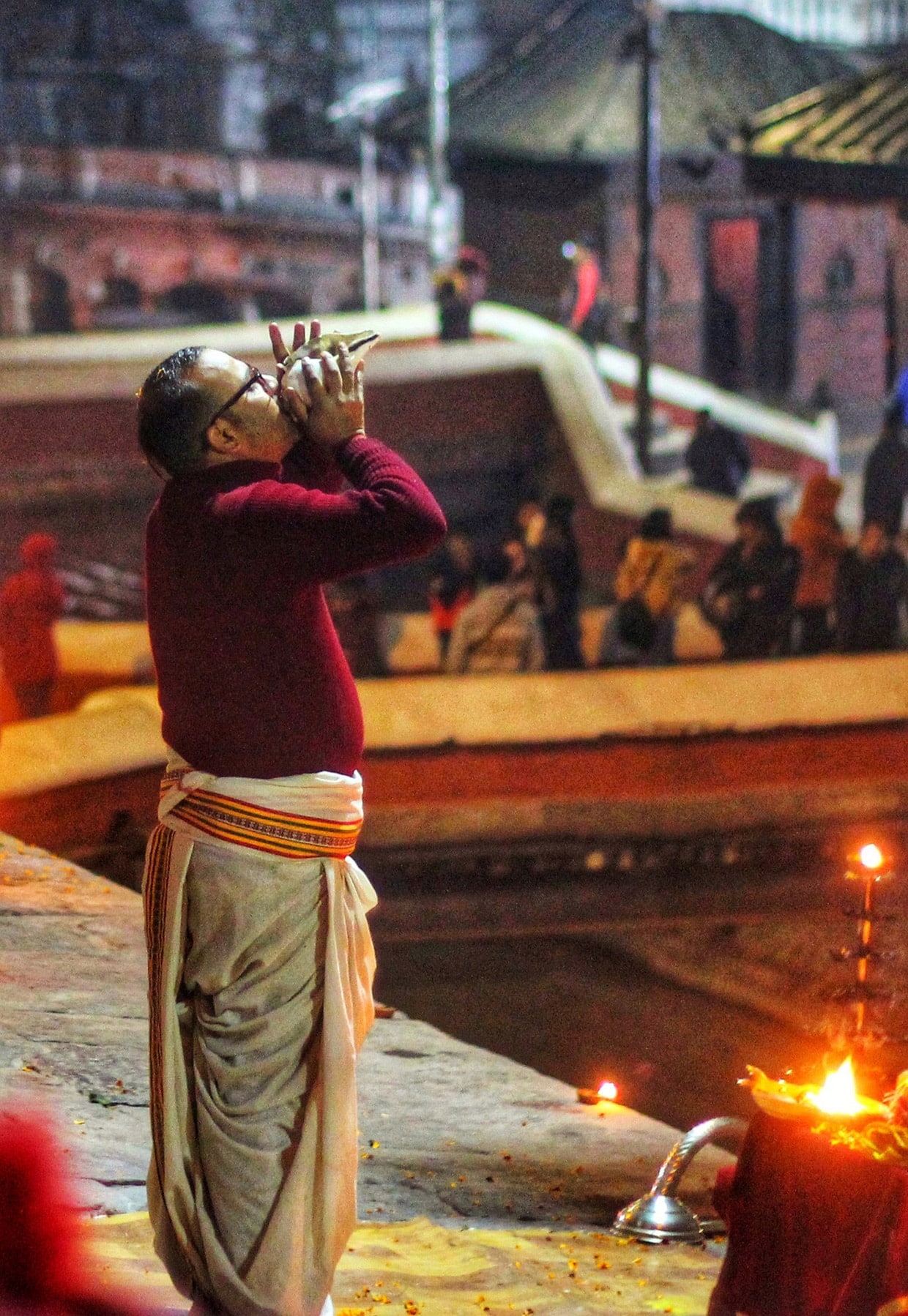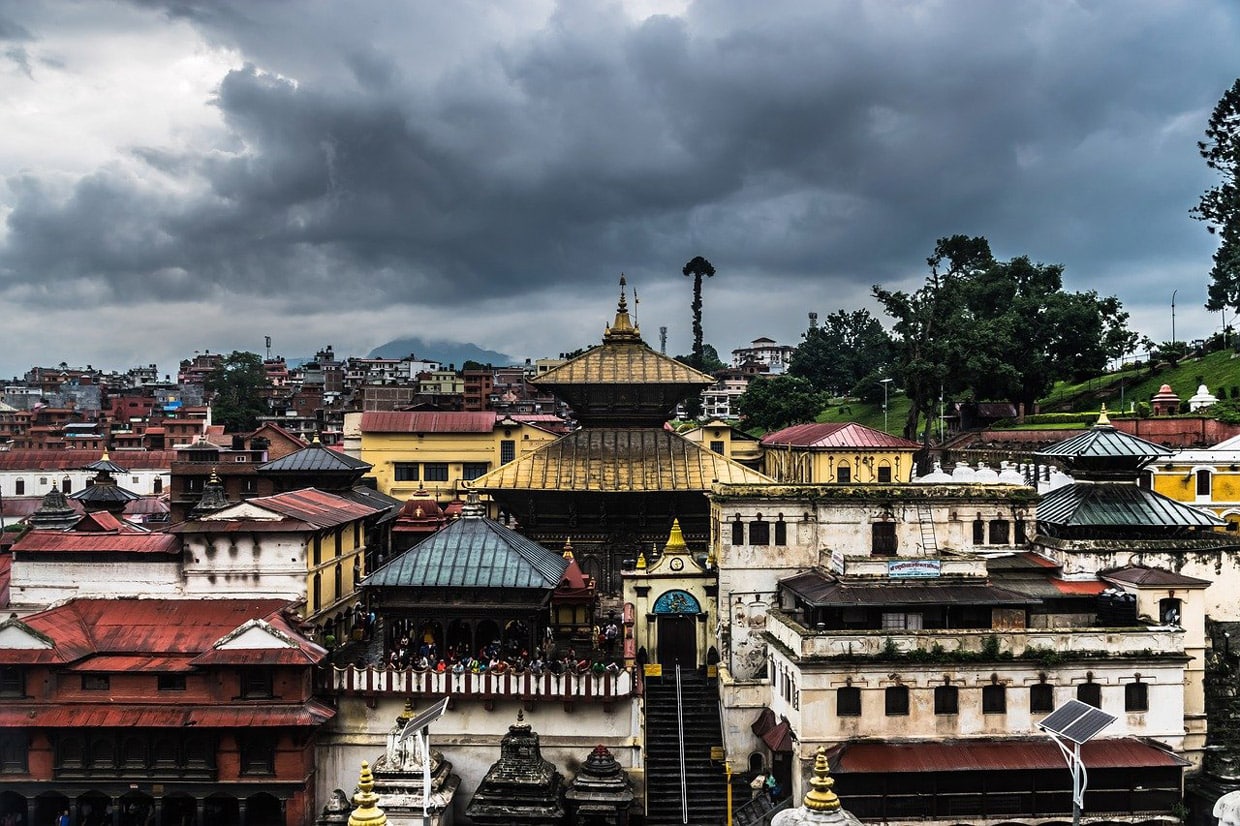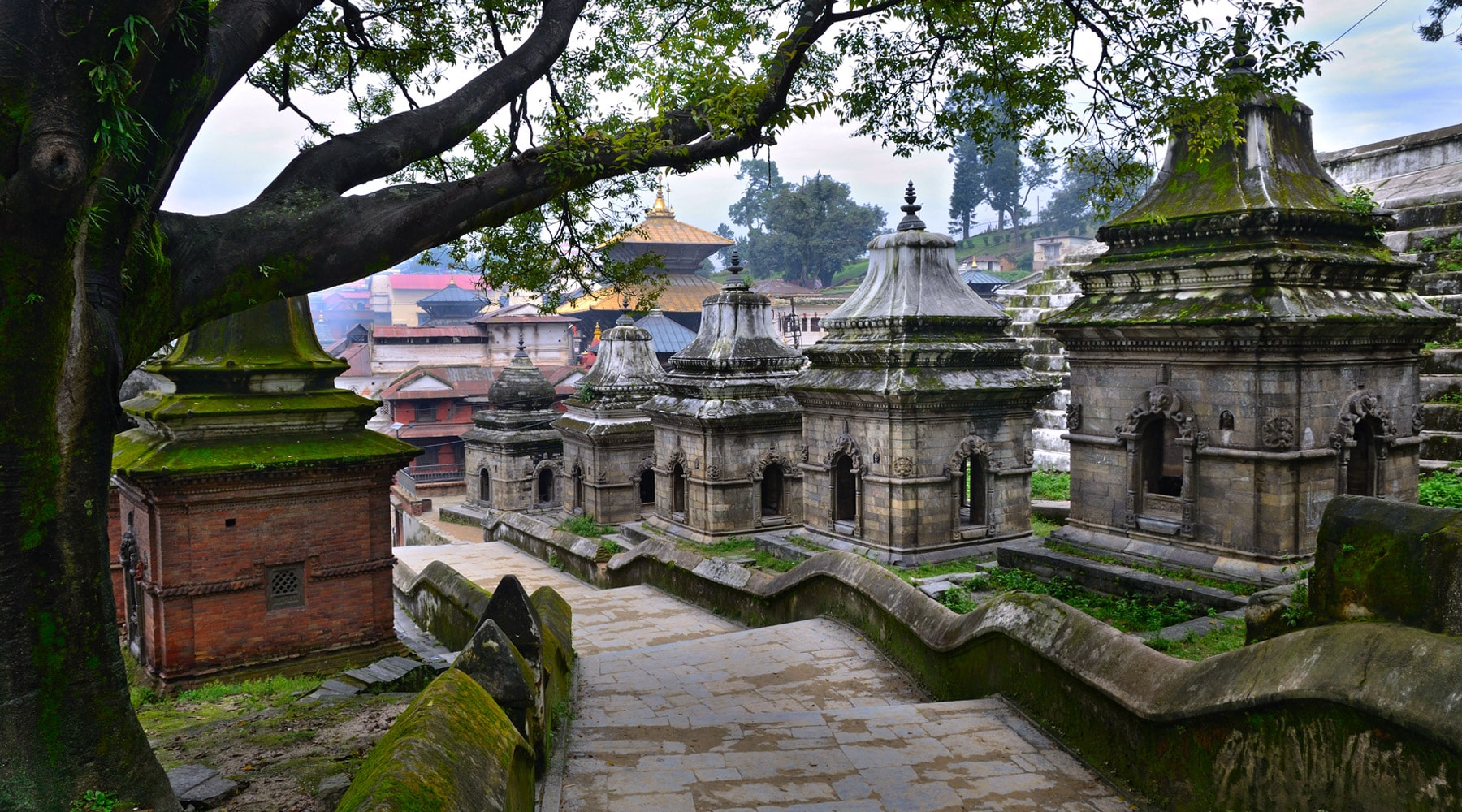If you’re fascinated by Hindu culture and its deep-rooted traditions, then you’re almost certainly aware of the beautiful and majestic Pashupatinath Temple. Known as the oldest Hindu temple, it is located near the Bagmati River in Kathmandu and stands as one of the most important pilgrimage destinations worldwide. Even if you’re not religious, a visit to Pashupatinath is a must-see—a great opportunity to meet locals and immerse yourself in the authentic culture of Nepal.
Where is the Pashupatinath Temple?
Pashupatinath (Pasupatinath पशुपतिनाथ मन्दिर) is situated on the eastern side of Kathmandu, the bustling capital of Nepal. This UNESCO World Heritage Site comprises 492 temples, ghats, and shrines dedicated to Lord Shiva—the Hindu God of destruction and re-creation. Alongside Brahma and Vishnu, Shiva forms part of the revered Hindu trinity, making this site an essential pilgrimage destination.
Although non-Hindus cannot enter the main temple, there’s still plenty to see and experience. You can access the temple complex via taxi, local buses (ask the driver to stop at Gaushala or Mitra Park), or by using popular Nepali ride apps like Tootle for bikes and Pathao for cars.
How to Travel to the Pashupatinath Temple
To visit Pashupatinath, start your journey in Kathmandu, Nepal. If you’re arriving by plane, you’ll be pleased to know that the temple is only a few hundred meters from Kathmandu’s Airport, and it generally takes less than 20 minutes to reach by car.
Since the temple is especially enchanting early in the morning and during evening prayers, we recommend finding a place to stay nearby. It’s also a good idea to have a meal before you arrive, as there are few full-service restaurants around—mostly snack bars with slightly inflated prices.
Where to Stay in Kathmandu
Kathmandu is a traveler’s haven with accommodation options to suit every budget—from luxurious hotels to cozy guesthouses. Many visitors choose to stay at least a week to fully explore the city and its surroundings. Whether you’re backpacking or seeking high-end comfort, Kathmandu has a place for you.
Budget accommodations, such as guesthouses and hostel dorms, can range anywhere from 400 to 2,500 NPR based on location and amenities. More upscale options can reach up to 25,000 NPR for larger, well-appointed hotel rooms. Here are some favored neighborhoods to consider while in Kathmandu:
Thamel
Located in the heart of the city, Thamel is a buzzing hub for travelers eager to meet fellow tourists and explore popular sights. Its lively ambiance and central location make it a favorite starting point for adventures in Nepal.
Patan
For those looking for a more authentic yet luxurious experience, Patan offers exquisite traditional Newari-style hotels that blend heritage with comfort.
Lazimpat
If you prefer a quieter area without sacrificing proximity to popular attractions and fine dining, Lazimpat is an excellent choice. Its central location ensures easy access to many of Kathmandu’s highlights.

Respect the Locals
As a revered place of worship, Pashupatinath demands respect. Visitors should dress modestly by covering their shoulders and legs. This respectful attire not only honors the local customs but also helps you blend in with the devout community.
A Short History of Pashupatinath Temple and the Pilgrimage
The origins of the Pashupatinath temples are steeped in legend. One popular myth recounts that during a divine battle, Lord Shiva lost a horn which was later found buried under the present-day site. According to the legend, a cow would daily irrigate the buried horn with her milk until herdsmen eventually uncovered it. This horn is now enshrined inside the temple’s first Shiva Lingam—the very symbol of worship for devotees.
Another story tells of a Lichhavi King, Supuspa Deva, who is said to have built a wooden temple over an existing lingam. While some legends assert that the lingam was already present, the king’s contribution was to construct a five-story temple to honor it. Dating back to as early as the 5th century (or possibly 400 BCE), the original structures may have succumbed to time, with main temples later rebuilt in the 17th century after termite damage. Sadly, many temples have been lost over the years.
Today, almost one million devotees visit this UNESCO-protected site annually, especially during the auspicious festival of Maha Shivaratri (“The Night of Lord Shiva”). Visitors are encouraged to time their trips during this festival to witness the vibrant rituals and spiritual fervor. Another notable festival is Teej—a three-day celebration dedicated to Lord Shiva and his consort, Parvati, during which thousands of Hindu women in red sarees gather at the temple.

What to Do at Pashupatinath Temple
Given its immense size and intricate layout, many tour guides find it challenging to cover every detail of the Pashupatinath complex. To fully appreciate this sacred space, keep these tips in mind during your visit. Note that a fee is required before entering the complex.
Visit the Temples
The vast temple complex boasts 492 temples built in various architectural styles—from the Pagoda style influenced by Malla architecture to dome and shikhara styles reminiscent of Mughal influences. Architecture enthusiasts will find endless details to admire.
Explore the Shiva Lingams
The Shiva Lingams—abstract representations of Lord Shiva—are predominantly made of stone. Most of these shrines can be found along the eastern side of the Bagmati River, offering a glimpse into the spiritual core of Hindu worship.
Witness the Ghats and Cremation Rituals
The ghats—a series of stone steps descending to the river—are where open-air cremations occur. The Western Ghats, found right in front of the main temple, are actively used for cremations. Meanwhile, the Arya Ghat is exclusively reserved for royal funerals, while other funerals occur further south. Across the Eastern Ghats, you can observe ritual baths and ceremonies steeped in tradition. Each ghat has a unique significance worth researching before your visit.
Take in Panoramic Views
Those who prefer some distance from the ghats during ritual ceremonies, simply cross the Bagmati River and ascend the nearby hills. Here, you can capture breathtaking panoramic views of the entire temple complex.
Engage with the Sadhus
Don’t be surprised if you encounter sadhus—the revered Hindu holy men who have renounced worldly attachments to pursue a life of meditation. Recognizable by the red marks on their faces and bodies, these spiritual guides are often friendly and eager to share their wisdom with visitors.
Explore the Local Market
Within the temple complex, you’ll find a bustling market selling religious souvenirs, fruits, flowers, and tika powder, which devotees use for offerings to Lord Shiva. It’s a lively spot that offers insight into local traditions and commerce.
Visit the Bagmati River
The sacred Bagmati River plays a crucial role in Hindu rituals. Many people choose to spend their final days near the temple, and others bring the ashes of loved ones to scatter into its waters. Although the river has suffered from pollution, ongoing efforts by cleaning organizations continue to improve its condition.
Discover the Votive Shrines
Votive shrines—dedicated to various Hindu deities—offer quiet spaces that are perfect for meditation and prayer. Located across the Bagmati River, these tranquil spots provide a peaceful retreat from the bustling temple area.
Walk Through the Forest
If you wander past one of the votive shrines, you may find yourself along a lush, forested path ideal for a reflective stroll. It’s a delightful way to clear your head and appreciate nature’s beauty.
Admire the Statues
The temple complex is adorned with magnificent statues of various Hindu gods and goddesses. A standout is the statue of Kalki, the prophesied future avatar of Lord Shiva. Partially buried in the earth, legends suggest that this statue will eventually emerge as a harbinger of the creation of a new world.
Final Words
Overall, whether you’re a devout follower of Hinduism or simply a curious traveler, Pashupatinath Temple offers an enriching experience steeped in history, spirituality, and culture. For a well-rounded trip, consider pairing your visit with another UNESCO World Heritage Site nearby—the Boudhanath Stupa in Kathmandu. They are just minutes apart.
Keep an eye out for wandering monkeys and cows during your visit. Monkeys, well-known for their clever pickpocketing, may snatch shiny items, so secure your belongings. In contrast, feeding the monkeys with fruits can be a fun way to engage with nature while watching the ongoing rituals, including cremations and other sacred customs.































